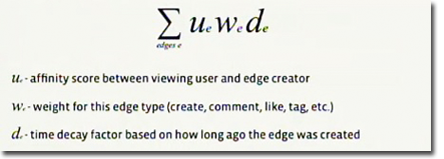 By now, almost every marketer has read statistics similar to the following about the ubiquity of Facebook:
By now, almost every marketer has read statistics similar to the following about the ubiquity of Facebook:
- Over 500 million users
- The average user has 130 friends on the site
- 50% of active users login every day
- The typical user sends 8 friend requests per month
- The average user spends 15 hours and 33 minutes on Facebook per month
- The typical user visits the site 40 times per month
- The average user spends 23 minutes during each visit
- More than 30 billion pieces of content are shared each day
As such, marketers are starting to awaken to the promise of Facebook – not only as a social media platform but also as a social marketing tool. Companies increasingly are setting up Facebook Fan Pages and focusing on getting users to ‘like them’. However, in order to leverage the power of Facebook as a marketing tool, you need to understand the process that determines whether posts from your Facebook Page will even reach your fans.
For most Facebook users, the news feed is the lifeline to their network – it contains all of the activities of their friends and pages they have liked. A user has two choices for her news feed: ‘Top News’ and ‘Most Recent’. Most Recent is a chronological order of all activity and Top News (the default) shows the content Facebook believes would be most interesting to the user.
One of Facebook’s challenges is continuing to provide a useful and relevant experience for its users as the total number of users increases, each person’s individual network expands, and the number of activities grows. For the average Facebook user, a news feed with all activities listed can become overwhelming and crowded with uninteresting content.
One way that Facebook is attempting to meet this challenge is by providing the Top News news feed. The content displayed in Top News is determined by Facebook’s EdgeRank algorithm. While Facebook doesn’t provide specifics, it has shared the components of the formula:
Don’t worry, you don’t need to dust off your old high school or college math text books. No complex computations are necessary. A brief overview of each component is all you need to get started on the right path.
Affinity score attempts to show the strength of interaction between the user and another Facebook entity (user, brand, etc.). If you click on posts from your Mom every day, comment on her wall, like her updates but never interact with the 1st grade teacher you friended, the affinity with your Mom will be much greater than with your 1st grade teacher. Affinity is a one-way score: I may have a different affinity score with you than you do with me.
Weight pertains to the type of activity and it is believed that certain activities are assigned more weights than others (e.g. a comment may be worth more than a like). The more engaged someone has to be to interact, the higher the weight is likely to be.
Time decay depicts that new content is going to be given preferential treatment over older content. Typically, as a post ages, it becomes less relevant and so it will lose EdgeRank. As with most social media, people want new and fresh content.
From a marketing perspective, the key takeaway is a simple ‘post it and hope they will read it’ approach won’t work. You have be more planned than that. As with any other marketing tool, it’s all about engagement. It’s thinking about what type of content will most likely generate a positive reaction – which content will your audience find interesting. Which content will generate the type of response that keeps you in someone’s Top News news feed?
Understanding how EdgeRank impacts your ability to stay connected with your fans is the first step to effectively using Facebook as a critical marketing tool for your organization.

